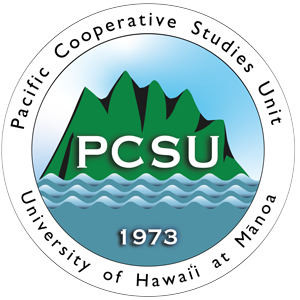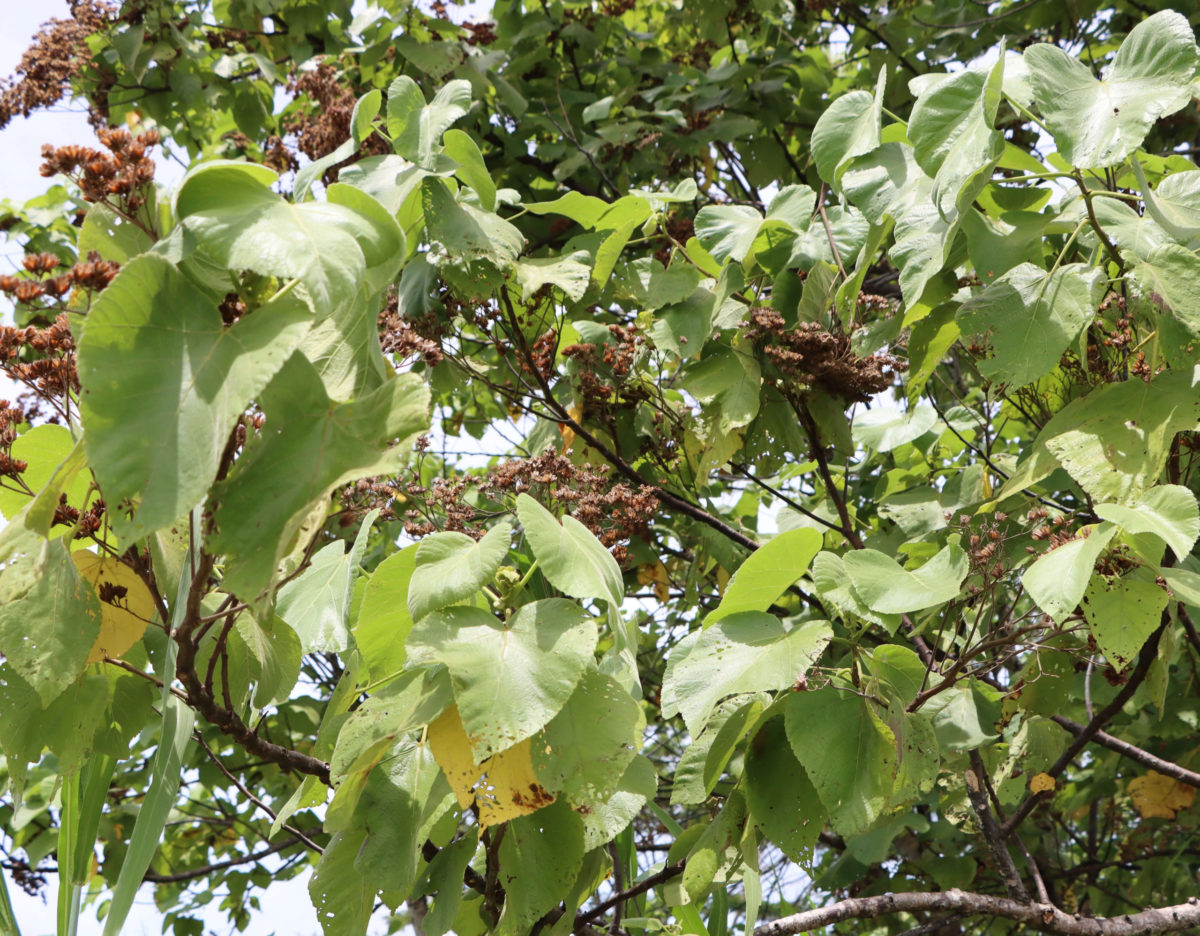
Melochia
Melochia, locally called “toilet-paper tree,” is native to India, SW Asia, Malaysia, and New Guinea. It was introduced to Hawaii before 1871 presumably as an agroforestry crop. More than 5,000 seedlings were planted throughout the forest reserves in the 1920s. It is a pest in Kauai, Oahu, Maui, and Hawaii island.
Impacts:
- Spreads from disturbed forests into intact native forests
- Copious winged seeds are wind-dispersed
- Small seeds have been known to contaminate road fill
Description:
- A tree growing from 6 to 45 feet tall
- Heart-shaped leaves are toothed along the edges and are covered with soft hair
- New leaves appear grey then turning more green as it ages
- Flowers are not showy, are pink, have 5 petals and 5 stamens, and grow in clusters that have a flat top
- This flower construction describes the species name umbellata, meaning flat top.
- Fruit is a 5 sided capsule that opens in an explosion to reveal numerous wind-dispersed seeds
Melochia (Melochia umbellata)
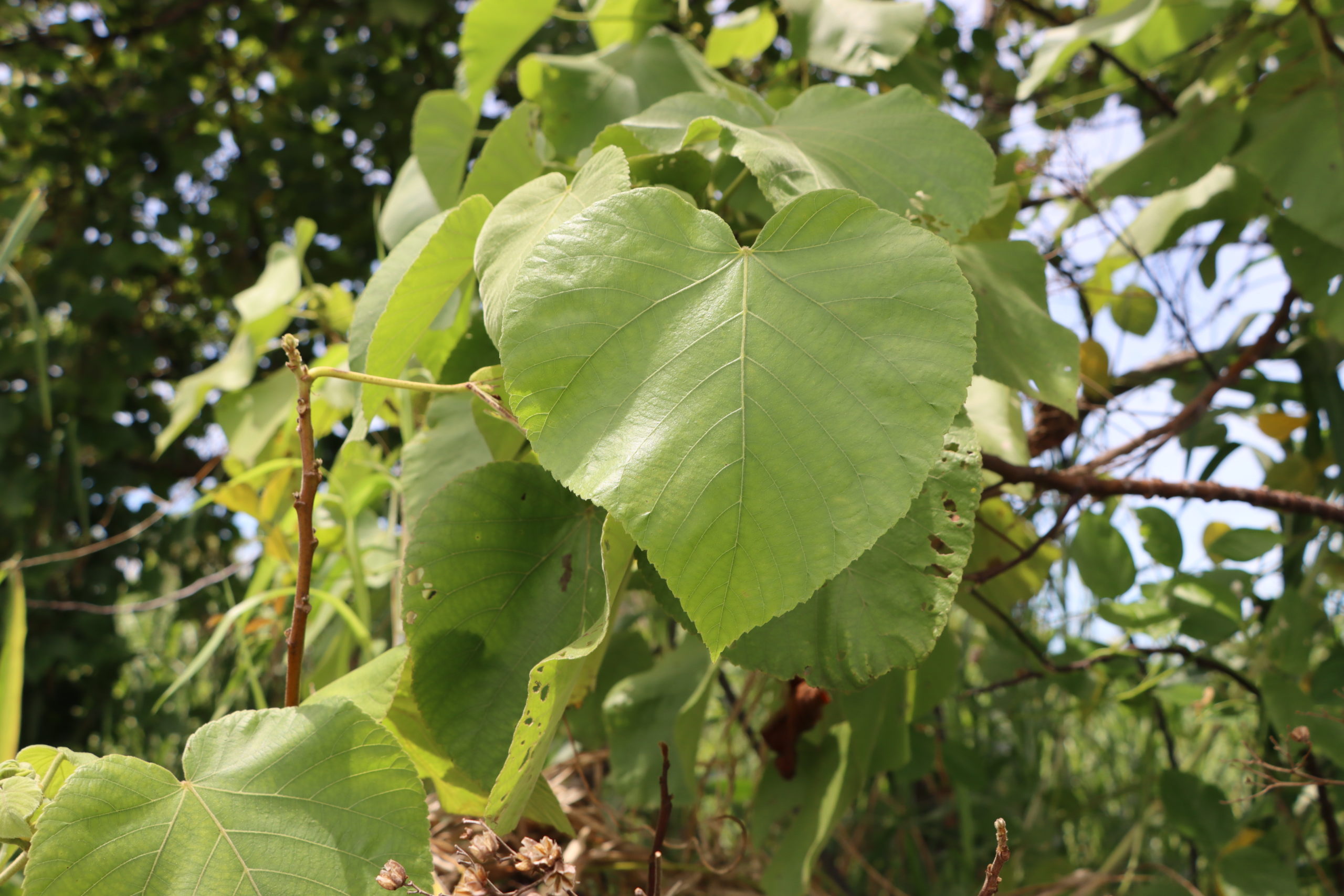
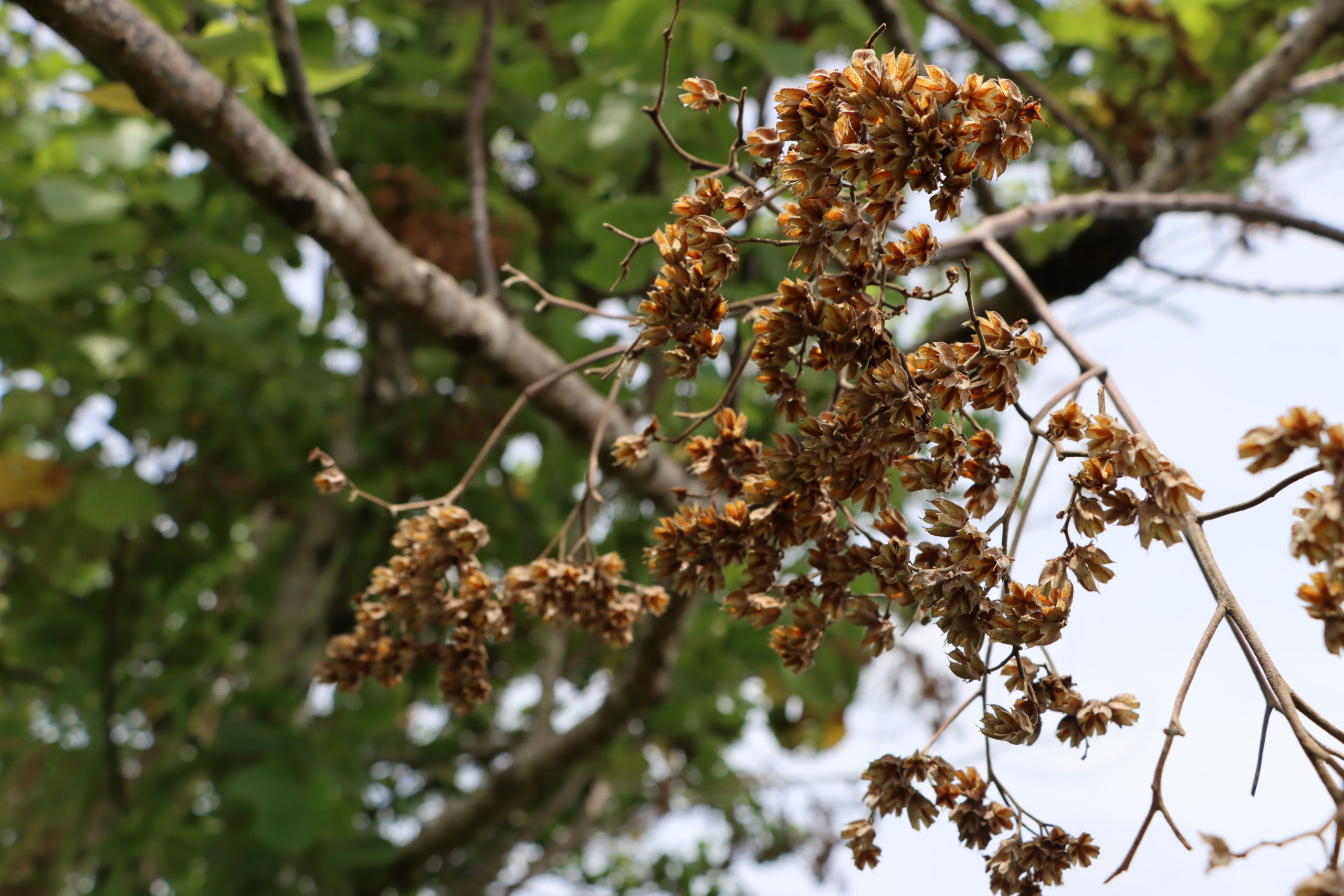
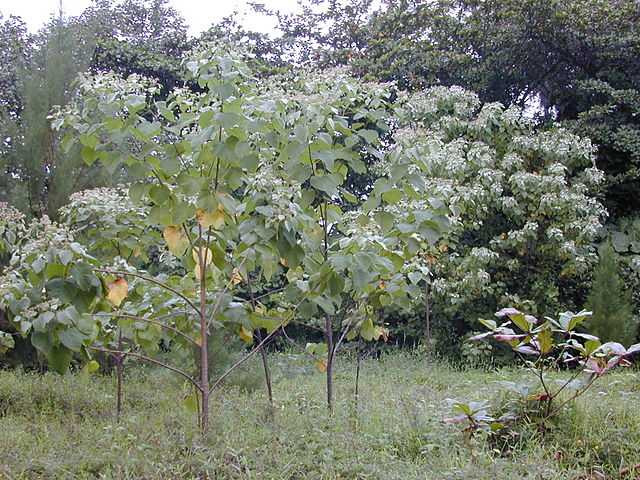
Photos (L-R): BIISC, BIISC, Forest & Kim Starr
Controlling Melochia
Physical control: Cut mature trees with a sharp tool. The young seedlings can be pulled out by hand. Hire a licensed arborist for large or hazardous trees.
Chemical Control: Application method: Incision Point Application (IPA)or cut stump.
- Effective herbicides: Milestone (Aminopyralid 40.6%) – label
- Directions: Using a hatchet or machete, make incisions ‛hacks’ at a 45-degree angle into the sapwood. At about waist high, make a hack every 2 inches around the trunk to make a circle. Apply .5 ml of undiluted herbicide into each hack.
In BIISC herbicide trials, melochia trees treated with Milestone were 100% defoliated within 60 days.
